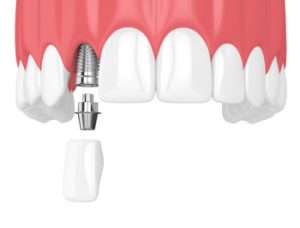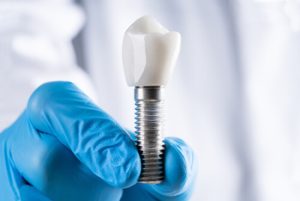Are you considering undergoing dental tourism in Bali? Dental implant treatments in Indonesia may be alluring, given its tropical scenery and seemingly affordable treatments. However, it’s crucial to understand the risks associated with dental tourism. In this comprehensive guide, we’ll explore why opting for dental implants in Australia is far safer, how to afford treatments locally, what to expect during the dental implant procedure, and the additional steps necessary for a successful smile makeover. Let’s delve into the crucial aspects of Bali’s dental implant industry and why Australian dental care stands out as a superior option.
The Dangerous Allure Of Bali’s Dental Implant Treatments: Risks Of Dental Tourism
Bali’s dental tourism industry attracts those seeking affordable dental implant treatments. However, beneath the surface of picturesque landscapes lies a host of risks that can jeopardise dental health and overall well-being. Understanding these risks is crucial before embarking on any dental procedures abroad.
Language Barriers And Communication Challenges

Varying Safety Standards And Quality Of Care
Another significant concern with dental tourism in Bali is the variance in safety standards and quality of care compared to countries like Australia. While some dental clinics may adhere to international standards, others may prioritise cost-cutting measures, compromising patient safety and treatment outcomes. Without stringent regulations and oversight, patients may encounter substandard facilities, outdated equipment, and inadequate sterilisation practices.
Limited Access To Follow-Up Care
Follow-up care is crucial to dental implant procedures to monitor healing progress, address complications, and ensure long-term success. However, patients undergoing dental treatments in Bali may face challenges accessing timely follow-up care, especially if they return to their home countries shortly after the procedure. Limited access to follow-up care increases the risk of untreated complications and compromises the overall effectiveness of the treatment.
Unfamiliarity With Local Dental Practitioners
Choosing a reputable and experienced dental expert is essential for successful dental implant treatments. However, patients travelling to Bali for dental procedures may lack familiarity with local dental practitioners and their qualifications. Without thorough research and recommendations, patients may unknowingly entrust their dental health to practitioners with limited expertise or questionable credentials, increasing the risk of complications and dissatisfaction with the results.
Lack Of Legal Recourse And Accountability
If the dental implant procedure is complicated or dissatisfaction occurs, patients undergoing treatments in Bali may encounter challenges in seeking legal recourse or holding practitioners accountable. Differences in legal systems, jurisdictional issues, and limited avenues for dispute resolution can leave patients feeling vulnerable and powerless to address their concerns. The lack of legal recourse further underscores the importance of thorough due diligence and caution when considering dental tourism options.
While the allure of Bali’s dental implant treatments may be tempting, carefully weigh the risks against the potential benefits. Language barriers, varying safety standards, limited access to follow-up care, unfamiliarity with local practitioners, and lack of legal recourse are significant concerns associated with dental tourism in Bali. Prioritising safety, quality, and accountability is paramount when considering dental procedures abroad, emphasising the importance of thorough research and informed decision-making.
Why Australia Is A Safer Choice For Dental Implants
Contrary to the allure of Bali’s dental tourism, Australia boasts a robust healthcare system and stringent safety standards in dental care. Australian dentists undergo rigorous training and adhere to strict regulations, ensuring the highest quality of treatment. Additionally, communication is seamless, eliminating language barriers and facilitating comprehensive consultations and follow-ups. Opting for dental implants in Australia provides peace of mind, knowing you receive first-class dental treatment in a safe and regulated environment.
Affording Your Dental Implant Cost In Australia
Affording dental implant treatments in Australia may initially seem daunting due to the perceived higher costs than overseas options. However, several strategies can help make these treatments more accessible and affordable:
- Research Payment Plans: Many dental clinics in Australia offer flexible payment plans to help spread the cost of treatment over time. These plans typically involve paying a portion of the total cost upfront and making monthly payments until the balance is cleared.

- Utilise Health Insurance: Health insurance can significantly reduce out-of-pocket expenses for dental implant procedures. While not all insurance plans cover dental implants, some offer partial coverage for certain aspects of the treatment, such as consultations, surgery, or follow-up care. Reviewing your insurance policy carefully and enquiring about coverage options for dental implants is essential.
- Explore Government Assistance Programmes: Depending on your circumstances, you may be eligible for government assistance programmes that provide financial support for dental treatments. These programmes often target low-income individuals, seniors, or those with specific health conditions. Researching available assistance programmes in your area can help offset the cost of dental implant treatments.
- Consider Dental Financing Options: Some financial institutions offer financing options for medical and dental expenses, including dental implants. These loans typically feature competitive interest rates and flexible repayment terms, allowing you to finance your treatment while managing your budget effectively.
Exploring these avenues and discussing your options with your dentist can make dental implant treatments in Australia more affordable and accessible. Investing in your oral health and well-being is a worthwhile endeavour that can yield long-term benefits and enhance your quality of life.
What To Expect When You Decide To Undergo Dental Implants In Australia
Getting dental implants in Australia to change your smile is an exciting venture that may greatly enhance your quality of life. A good and seamless treatment experience may be ensured by being aware of the processes involved in the dental implant process. Following an Australian dental implant procedure for a smile makeover, you may anticipate the following:
Initial Consultation
Your initial meeting with your Australian dentist marks the start of the process. During this visit, your dentist will thoroughly evaluate your oral health, including a jawbone and teeth assessment. In addition to discussing your treatment objectives and answering any worries you may have, they will assess your suitability for dental implants.
Treatment Planning
Your dentist will create a customised treatment plan based on the information gathered from your initial appointment, considering your particular requirements and preferences. This plan will include the phases of your smile makeover, the number of implants necessary, any extra surgeries that may be needed, and the treatment schedule.
Dental Implant Surgery
The surgical implantation of the implant fixings into your jawbone is the next step in the dental implant procedure. This treatment is usually carried out under local anaesthesia to enhance your comfort. Your dentist will make tiny incisions in the gums during the procedure, place the implant fixings into the jawbone, and then sew the wounds together.
Healing And Osseointegration
For the implants to undergo osseointegration—the process by which they fuse with the surrounding bone—a healing time following implant surgery is required. This procedure, which usually takes several months, is essential to the stability and durability of the implants. To track your recovery, your dentist will plan follow-up consultations and guide post-operative care.
Abutment Placement
After the implants have completely fused with the jawbone, abutments are affixed to the implant fixtures. These abutments serve as a link between the dental prosthesis or fake teeth and the implants. To make custom-made crowns, bridges, or dentures that are firmly fastened to the abutments, your dentist will take imprints of your teeth.
Final Restoration
Placing the permanent dental prosthesis onto the abutments is the last stage in your smile makeover. Your dentist will make changes to ensure the correct fit, function, and aesthetics to obtain the desired result. Once your new smile is complete, you’ll experience improved dental health, functionality, and confidence.
Following these guidelines and working with a reputable Australian dentist can help you get dental implant procedures that will give you a brilliant and self-assured smile. Although getting a smile makeover may take some time and patience, the benefits to your general and dental health are priceless.
Additional Treatments For A Successful Smile Makeover
While dental implants offer a highly effective solution for replacing missing teeth, some cases may require additional treatments to ensure the success of your smile makeover. These supplementary procedures address specific dental issues and contribute to your dental implants’ long-term stability and functionality. Here are some common additional treatments that your Australian dentist may recommend as part of your dental implant journey:
Bone Grafting
In cases where the jawbone is not dense enough to accommodate dental implants, bone grafting could be required. This treatment entails augmenting the jawbone and creating a firm foundation for implant placement by either employing synthetic materials or transferring bone tissue from another section of your body. The process of bone grafting extends the life of your dental implants by promoting osseointegration.
Sinus Lifting
Implant placement in the upper jaw might be complicated by its proximity to the sinus cavity, particularly when replacing lost teeth in the posterior area. A sinus lifting procedure, often referred to as sinus augmentation, raises the sinus membrane and adds bone graft material underneath it to raise the height of the surrounding bone. This provides the best possible support and stability and makes room for dental implants.
Gum Disease Treatment
Periodontal (gum) disease can compromise the success of dental implant treatments by affecting the health of the surrounding gums and bones. If you have gum disease, your dentist will recommend appropriate treatment for infection and inflammation, such as scaling and root planing or periodontal surgery. Managing gum disease is essential for preserving the integrity of the supporting structures and maximising the longevity of your dental implants.
Orthodontic Treatment
In some cases, orthodontic treatment may be necessary to correct misaligned teeth or improper bite alignment before proceeding with dental implant placement. Orthodontic appliances, such as braces or clear aligners, can reposition teeth and create adequate space for implant placement, ensuring optimal aesthetics and functionality of your smile makeover.
Crown Lengthening
Crown lengthening is a surgical procedure that involves removing excess gum tissue and, in some cases, bone to expose more of the natural tooth structure. This treatment may be recommended to improve the proportions of your teeth and create a more harmonious smile before placing dental crowns or bridges on dental implants.
Addressing these additional treatments as part of your dental implant journey can enhance the success and longevity of your smile makeover. Your Australian dentist will develop a comprehensive treatment plan tailored to your specific needs and goals, guiding you through each step of the process for a confident and radiant smile.
Frequently Asked Questions
How much do dental implants cost in Australia compared to Bali?
While the initial cost of dental implants may be higher in Australia, factoring in long-term benefits and quality of care makes it a worthwhile investment. Many clinics offer payment plans and accept health insurance, making treatments more affordable.
Are dental implants permanent?
Yes, dental implants provide a permanent solution for missing teeth. Proper care and maintenance can last a lifetime, offering stability and functionality comparable to natural teeth.
What are the risks of undergoing dental implants in Bali?

How long does the dental implant procedure take in Australia?
The duration of the dental implant procedure varies depending on individual cases and treatment plans. Typically, the process involves multiple appointments spanning several months to ensure successful implantation and healing.
What are the advantages of choosing Australian dentists for dental implant treatments?
Australian dentists undergo rigorous training and adhere to strict regulations, ensuring the highest standards of care and safety. Seamless communication, personalised treatment plans, and comprehensive follow-ups make Australian dental care a superior choice for dental implant procedures.
Enjoying A Smile Makeover Without Seeking Dental Treatment Abroad
Prioritising safety and quality is paramount in dental implant treatments. While Bali may offer enticing scenery, the risks associated with dental tourism are significant. Opting for dental implants in Australia ensures superior care, stringent safety standards, and long-term benefits for oral health and overall well-being. Invest in your smile with Australian dental care and enjoy the confidence of a radiant and healthy smile for years to come.
Contact Complete Dental, Elanora QLD 4221, at 07 5235 8199 for a high-quality dental implant treatment with a local dentist.
Note: Any surgical or invasive procedure carries risks. Before proceeding, you should seek a second opinion from an appropriately qualified health practitioner.
Sources:
“ADA Policies – Elective Overseas Dental Treatment.” Australian Dental Association, ada.org.au/policy-statement-2-2-6-elective-overseas-dental-treatment.
Adams, Lina. “Beware of Language Barriers, Dental Tourists Warned – Dentistry.” Dentistry.co.uk, 30 Aug. 2023, dentistry.co.uk/2023/08/24/beware-of-language-barriers-dental-tourists-warned.
Colgate. “Bone Graft for Dental Implants: Understanding the Possibility.” Colgate®, 12 Feb. 2024, www.colgate.com/en-gb/oral-health/implants/bone-graft-for-dental-implants-understanding-the-possibility-0213.
Dental Implant Surgery – Mayo Clinic. 29 Jan. 2019, www.mayoclinic.org/tests-procedures/dental-implant-surgery/about/pac-20384622.
Dental Tribune International. “Dental News – Risks of Dental Tourism Highlighted by ADA.” Dental Tribune International, 13 July 2017, www.dental-tribune.com/news/risks-of-dental-tourism-highlighted-by-ada.
Sinus Lifts for Implant Treatment | Bupa Dental Care. www.bupa.co.uk/dental/dental-care/treatments/dental-implants/supporting-treatments/sinus-lifts.
Steinheimer, Lauren. “5 Ways to Get Low-Cost Dental Implants.” NewMouth, 9 Feb. 2024, www.newmouth.com/blog/low-cost-dental-implants.









